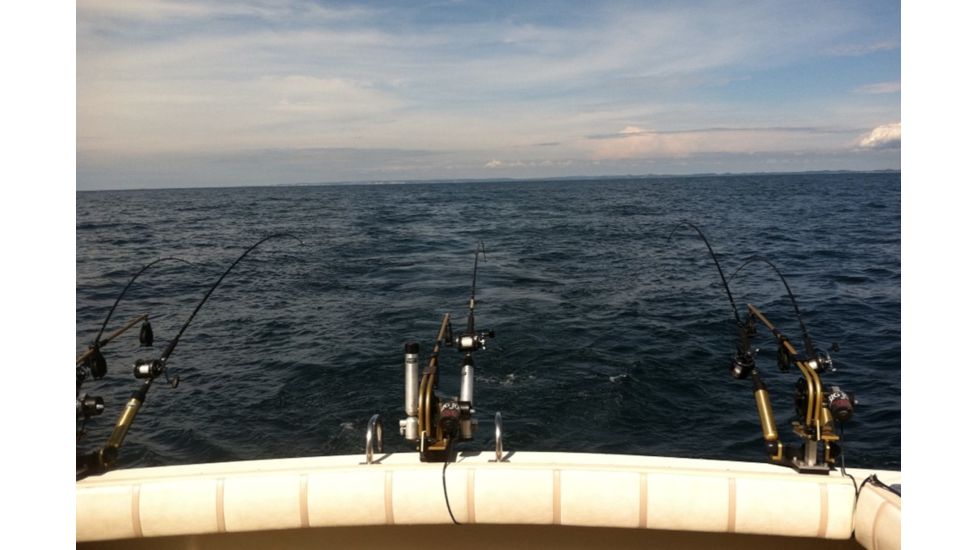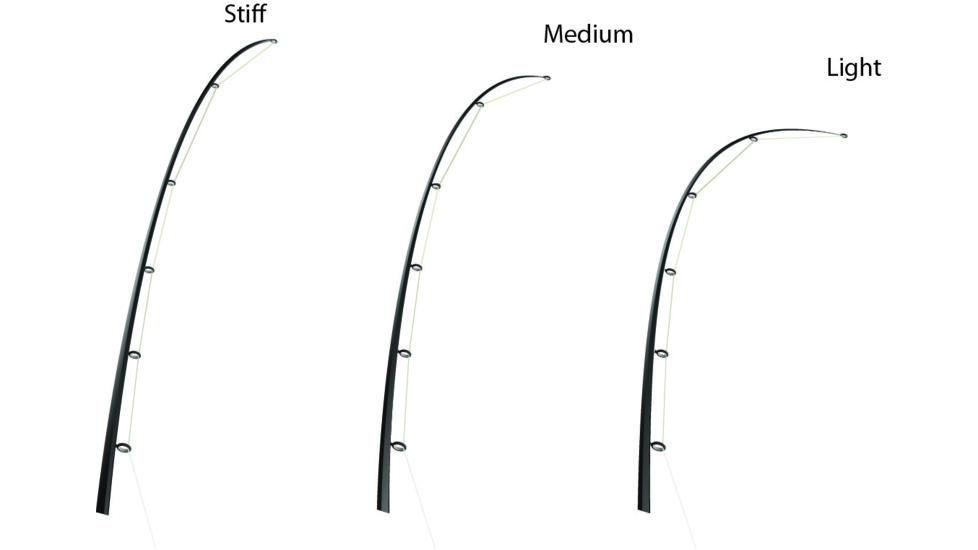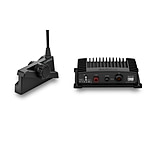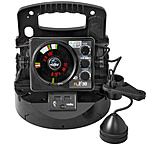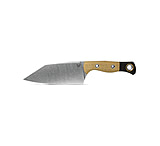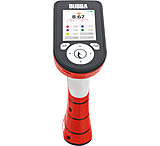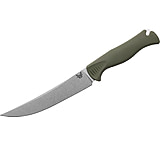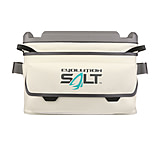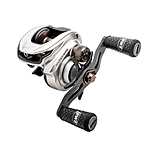Sudden trip to the lake? Camping this weekend? Fishing the open seas? Need to know what to buy right away? Everything you need to land that mysterious beast from the deep tugging on the end of your line is right here in this guide. With a basic understanding of rod types, rod construction, and actions, you can prepare for when that line goes straight! Here is a quick how-to guide describing what fishing rod to look for so you can get your line in the water and land that fish!![]()
Action ranges and target species:
- Ultra-Light = Crappie, bait, most small fish
- Light = pan fish, bluegill, sunfish, Jacks, Drums
- Medium Light = Bass, Walleye, Trout
- Medium =Bass, Catfish, Redfish
- Medium-Heavy = Pike, Musky, Snook, Salmon
- Heavy = Tuna, Sturgeon, Salmon, Tarpon
- Extra-Heavy = Sailfish, Shark, Tuna, Halibut
The first things you need to consider before buying a fishing rod are: 1.)What species of fish are you targeting? 2.) How or where will you be fishing? The proper rod length, action, and power are all different depending on each species and method of fishing. If you are fishing from a boat with plenty of deck space, rod length is not really going to be an issue. If you are walking through the woods, or working down a river bank, length and multi-piece rods are elements to consider.
Fishing Rod Length And Action
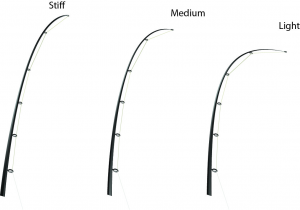
Action can be described as how much the rod bends (deflects) when pressure is applied to the tip. There are multiple action rods built for every type of fish. The bend in the rod, or the action in the rod, changes as the size of the rod changes.
Action is basically the reaction that the fishing pole is going to have from a fish strike, and how it handles the movement from bait or a fishing lure.
Action and length go hand in hand. The shorter rods are typically ultra-light to light action, and bend throughout the better part of the entire pole. These shorter, lighter, rods are designed to catch smaller fish, such as pan fish, where a hard hook-set is not always desired.
The smaller the rod, the smaller or lighter the fishing line pound test is going to be. For example, a 5ft fishing pole might be rated for line only up to 5lbs, limiting the size of the fish that you can successfully land, even if you're using a fishing net or other gear.
Construction Of Fishing Rods
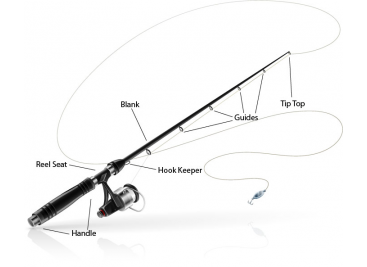
The length of a fishing rod is a crucial element to the selection process. When deciding on construction types it is absolutely necessary to keep in mind the storage, and transportation that might be associated with your style of fishing. Tools are made to make your life easier not harder, so put some consideration into your individual needs! A 10ft fishing rod that uses a one piece construction is going to be a problem if you have to walk through the woods to your favorite fishing hole. At the same time, that 10ft rod is going to be difficult to cast if the surrounding area is dense with trees.
Solid piece construction is best for feel but not for transportation and storage. Evaluate the size of your automobile and boat before buying a fishing rod. A 7 foot pole of solid 1 piece construction is not going to fit in the back of a small sedan. At the same time, even larger rods on large fishing boats take up lots of deck space and are difficult to maneuver.
For the ultimate storage and travel ready fishing poles look at Telescopic rods that extend to full size fishing rods!
Power/Strength-Materials Fiberglass And Graphite Fishing Rods
Power comes down to the brute forces that the pole can handle. Many factors come into this equation, such as materials and size of the rod. Today's poles are made up of many different materials in a constant battle for the best feel and therefore best rod.
Some of the best fishing poles on the market are made from a combination of graphite and fiberglass. In an effort to be the best, companies are always looking for new material and combinations that every angler will love.
What Are the Different Types of Fishing Rods?
Now that you have determined the species and how you are going to fish for them, you must decide between the two main types of rods: Casting Rods and Spinning Rods. With thousands of options and tons of pole manufacturers this is easier said than done. As with any tool you get what you pay for, that is why rods can vary from a few dollars to hundreds of dollars.
Spinning Rods
Spinning rods have large guides, or eyes that allow the line to flow freely out of the open-bale spinning reels that they are suited for. Spinning rods and spinning reels range greatly in size, allowing you to target a wide variety of fish species, from pan fish to large open water sport and trophy fish.
Casting Rods
Casting rods are often equipped with baitcaster or "casting" reels that usually have a button-controlled spool design. Casting rods are usually stiffer for larger fish and heavier lures. These poles have smaller eyes than a spinning rod, and are far more accurate for casting. Casting rods are the preferred setup for most professional bass fishermen on the circuit today.
Specialty Rods
Specialty rods, such as Fly rods and surf, ice, and trolling rods have specific applications and are generally used for one application. These rods can vary greatly from size, quality, and price. The selection of these rods is solely up to the angler based on their needs and wants. Some rods, like Ugly Stik, are guaranteed not to break! After countless hours of abuse by humans and fish, the materials and durability quickly become major elements in any rod purchase.
Fly Fishing Rods
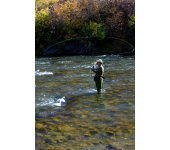
Fly fishing rods are an entirely different entity when it comes to the fishing world. They require lots of skill and experience to use correctly. These rods are generally quite long and require the user to make big long casts whipping the line back and forth until enough momentum is generated to cast the fly or lure. Fly rods are highly customizable and range in actions from light enough for brook and speckled trout to large fighting tarpon. These rods and this style of fishing are not recommended for the entry level angler.
Fishing with a fly rod is generally done on the surface of a river or stream with a floating line and fishing leaders. Sinking line and leaders allow anglers to pursue quarry just under the surface. This surface style of fishing usually makes for pleasant visual spectacle!
Surf Rods
Surf rods are large, long rods and are most commonly found in a spinning rod and reel configuration. Surf poles like their name depicts are made for surf fishing. Surf fishing is fishing from a beach where waves prohibit the ability to get the bait out to the fish. The answer is length, and that's what you'll find in surf rods. For example, Okuma Fishing Rods are very tall to keep the angle of the line high enough, eliminating the surf's power to wash the lure/bait back onto shore.
Ice Fishing Rods
Ice Fishing rods are made for fishing through a hole in the ice. Ice fishing can be very fun, and a totally different experience than most fishing. These rods are extremely short because there is no casting involved, and are mostly found in a spinning setup. These rods come in a wide range of actions. Walleye, Northern Pike, and Perch are some of the most common species targeted through the ice. For anyone living in a climate where solid and safe ice is common should give it a shot! Ice fishing is a great way to get out into fresh air and break that cabin fever.
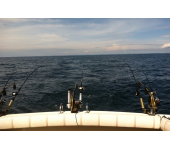 Trolling Rods
Trolling Rods
Trolling rods are used for a style of fishing known as trolling. Trolling is when you drag the bait or lure in the water behind a moving boat. Trolling is useful for many species of fish, from walleye and northern pike to marlin. Trolling for salmon is best at speeds of 3-5mph depending on water temperatures and season. Trolling for something as predatory as a marlin might require you to move so fast the lure is barely staying in the water. Some trolling, such as trolling for a fast fish called Wahoo, is done at such high speeds the lure is literally skipping across the top of the water behind the boat! Trolling rods must be tough and durable, due to the constant bend they maintain while in use, and the beating humans and fish can put on them.
What You Should Know About Fishing Rods
Responsiveness is the feeling and action that the rod has after the length, construction materials, guides, handle materials, and price come together. How stiff or soft is the tip? How much backbone or rigidity is there behind the tip? How does the grip feel? These are all questions that only you can answer after using and testing a fishing rod. Nobody can tell you what feels good, or what you will like. It is absolutely in the eye of the beholder to decide what feels best and what will net that next lunker A.K.A, a trophy fish.
Most Popular Fishing Poles
The most common pole, action, and setup on the market today according to Shakespeare and other manufacturers is a 6ft 6in rod, a medium action, and in a spinning rod configuration. This combination allows the user to catch a variety of fish without issues. This rod is a true multi-purpose tool allowing the angler to fish for a broad species, or whatever happens to be biting!
How Much To Spend On A Fishing Rod
Like all gear, fishing equipment covers a vast spectrum of costs to fit everyone's particular budgets, and needs. Guns and scopes are a similar beast, as it is easy to spend $1000 on a gun and $100 on a scope and hope for the best. Odds are you might get away with it for a while, but eventually like every piece of equipment you get what you pay for!
Many companies sell combination packages that include both a rod and a proper sized reel, and some will even throw in fishing line! These combination packages are a great idea for anyone just getting into fishing. Any angler that is unsure of what rod to purchase, but knows their budget restraints, should look for a quality product under their price limit and reserve money for a quality fishing reel. Thanks to the extremely competitive fishing market it is very easy to get a great rod and reel at a great price.












